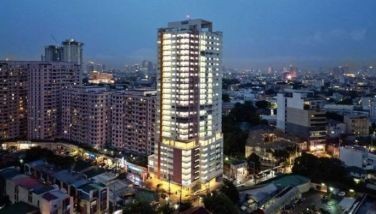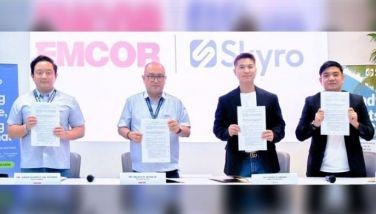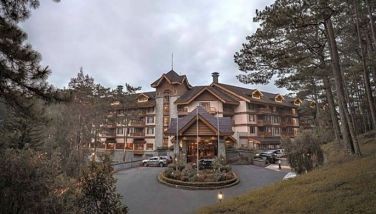Political rifts worsen Mindanao blackouts

February 23, 2007 | 12:00am
 Mindanao has been suffering daily power outages for five years now. No relief is in sight. Despite startup last month in Misamis Oriental of a 200-mw coal-fired generator, energy officials foresee crisis if the region fails to get extra 850mw within 2009-2014. Present capacities are stretched taut. The Mindanao power grid keeps in reserve only 113-222mw, in breach of the Energy Regulatory Commission’s rule for 286mw. Sudden shutdown of just one power plant would cripple the entire grid and put at least two provinces at standstill. This happening on Election Week could spark political revolt all the way to Luzon and Visayas.
Mindanao has been suffering daily power outages for five years now. No relief is in sight. Despite startup last month in Misamis Oriental of a 200-mw coal-fired generator, energy officials foresee crisis if the region fails to get extra 850mw within 2009-2014. Present capacities are stretched taut. The Mindanao power grid keeps in reserve only 113-222mw, in breach of the Energy Regulatory Commission’s rule for 286mw. Sudden shutdown of just one power plant would cripple the entire grid and put at least two provinces at standstill. This happening on Election Week could spark political revolt all the way to Luzon and Visayas.
Lanao del Sur, one of the poorest provinces, is also among the worst hit. Two- to eight-hour daily blackouts have become routine. Fortunately Lanao has a mountaintop lake from which to churn hydroelectricity. A firm called Lanao Hydropower Development Corp. is set to reopen and expand a long-dormant 225-mw project known as Agus-3. Unfortunately, though, the firm cannot start work because beset by political obstacles.
Lanao Hydro’s first hurdle was the right to operate. The Dimaporo political clan of Lanao questioned the National Power Corp.’s franchise award to the firm owned by former governor Saidamen Pangarungan. There should have been public bidding, they said, instead of negotiated deal. The NPC’s reason was basic, though. Pangarungan owns 80 percent of the land covered by Agus-3, in the towns of Pantar and Baloi in Lanao del Norte, and Saguiaran in Lanao del Sur; local residents, mostly kin, own the rest. When the landowners incorporated themselves to rerun a dilapidated plant, NPC naturally welcomed a chance to privatize power generation, as the law mandates. It could not have held a bidding for property it did not own. Still, the Dimaporos exerted clout for a Malacañang review  which spells delay.
Also under fire is NPC’s deal to sell Lanao Hydro’s electricity for a fee of 12¢ per kWh. That the issue is being raised at all is odd. The NPC holds similar pacts from other power producers to market to distributors, electric cooperatives and bulk users, for which it has not been questioned. The arrangements are infinitely better than the take-or-pay provisos enjoyed by certain producers who joined the fray during the countrywide power crisis of 1990-1993. Besides, the NPC is making money from the fees, at least to balance off operations losses from price subsidies. Yet that too is an issue in Malacañang.
Prices are at the core of to-do. From projections, Lanao Hydro would be selling its electricity at P4.32 per kWh by 2011. The Dimaporos assail this as a doubling from the present Mindanao average of P2.62 per kWh. But the untold portion is that while the energy department plotted the average rate at P1.20 per kWh in 2002 and P2.62 in 2006, it also projects an annual rise of 16.8 percent. With this trend, Mindanao’s rate in 2011 would be P5.70 per kWh, making Lanao Hydro’s P4.32 much lower.
Industry experts note that Lanao Hydro’s projected price of P4.32 per kWh three years hence is even lower than the present P4.80 cost to extract electricity from Mindanao diesel plants. Eighty percent of Mindanao’s capacity runs on diesel, yet the present selling price is only P2.62 per kWh because Luzon consumers are subsidizing the region. The arrangement can’t go on forever, for Luzon consumerists are beginning to complain. But even if the subsidy goes on, Lanao Hydro’s P4.32 in 2011 would be diluted to only about P2.80 when its electricity is blended with the rest of the grid.
Pangarungan says the rates not only will be less than made out to be, but his power plant also will be environment-friendly. Too, it would reduce the country’s fuel imports. On the whole, Agus-3 would benefit Mindanao folk. "Opposition to this can only come from an insecure politician or business competitor who wants to charge higher than P4.32 kWh in 2011," Pangarungan states in a position paper.
The Dimaporos reportedly suspect Pangarungan of planning to run again for governor, so they are cutting him down this early. A last question they raise is who actually owns Lanao Hydro, since Pangarungan allegedly does not have the millions to plunk in. The latter swears he is not about to make a political comeback, and that he has enough friends and assets to raise the capital. Yet with the way the fight is going, Pangarungan may be provoked to run against the Dimaporos. In which case, the hydroelectric project could be sidelined. With no other plant on the rise, the people of Lanao and the rest of Mindanao would face power crisis.
So Pangarungan raises his own question: why don’t the Dimaporos put up their own 225-mw plant or bigger, then sell at less than P4.32?
BrandSpace Articles
<
>
- Latest
- Trending
Trending
Latest
Trending
Recommended

February 17, 2025 - 5:18pm



























